Waste Treatment Technology in JAPAN
Ash Handling
Figure 1 System flow diagram
Table 1 shows the demonstration plant specifications. The plasma torch has an output capacity of 300kW and can be operated in either the transferred mode or non-transferred mode. The furnace design capacity is 300kg of ash per hour and the furnace size is 1350mmO.D. X 800mmH. The upper part of the furnace wall is water cooled to provide a temperature gradient in the refractory so that refractory life is extended by the slag self-coating effects. Ash is continuously fed to the furnace by a screw feeder and melted by the plasma arc jet. The molten slag is discharged from an overflow type tap hole. HCl, NOx, SOx and vaporized materials in the exhaust gas are removed by the gas treatment system.
Table 1 Demonstration plant specifications
Table 2 Slagging ratio data
Table 3 Results of leaching tests of slag (mg/l)
Table 4 Commercial plant specifications
[Outline]
In Japan, the majority of Municipal Solid Waste (MSW) has been incinerated and the ash from MSW incinerators has traditionally been landfilled. However, problems associated with MSW incineration ash such as contamination by dioxin, furan and heavy metals have arisen concerned.
In response to the concerns associated with ash treatment, KOBE STEEL, LTD. and The Kansai Electric Power Company developed plasma melting system.
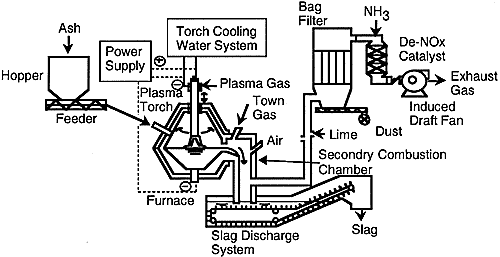
[System description]
Figure 1. shows typical system flow diagram. The system consists of a plasma heating system (plasma torch, power supply, etc.), a furnace, an ash feeder, a slag discharge system and an exhaust gas treatment system.
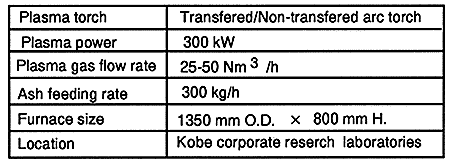
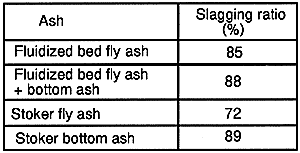
[Characteristics]
1. Plasma melting system can treat many different kinds of ash. Table 2 shows
slagging ratio data obtained from demonstration test.
2. The exhaust gas treatment system can be much smaller than conventional process,
because plasma heater operate with l/l00th of the air needed by fossil fuel
heaters.
3. Dioxins are completely decomposed by high temperature. Figure 2 shows the
balance of dioxins in the plasma melting furnace installation. More than
99% of the dioxins are decomposed by plasma heating.
4. Leaching values are below the detection limit, confirming the non-toxicity
of the slag. Table 3 shows the result of slag leaching tests.
5. The slag has suitable properties for various uses. It can be used as crushed
stone for concrete or road construction etc.
Figure 2 Dioxins balance
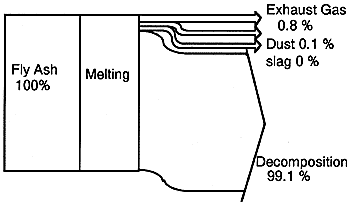
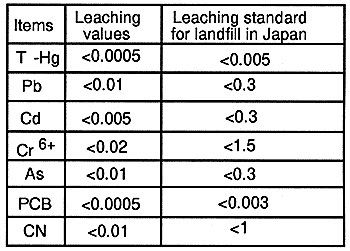
[Applications]
The commercial plant is under construction in Tokusima Pref. Japan. Table 4 shows its specifications. It will be the first commercial plasma melting plant for "fly ash only" in Japan. It is scheduled to be operating by the spring of 1997.
